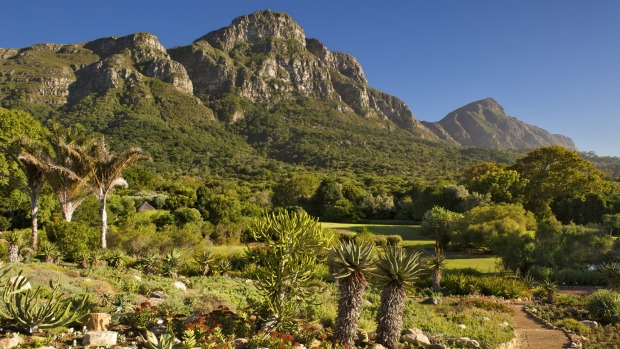
It's late lunchtime, and we're at the trendy Harbour House restaurant in the small, fishing-village of Kalk Bay, on the far-flung outskirts of Cape Town, looking out for cruising humpback and southern white whales, fishing boats and crazy surfers.
Gloomy, 90 per cent forecasts of heavy rain throughout the day have proved 100 per cent wrong. Instead, the day has turned out bright and sunny - though blowy enough to whip up the sea, sending waves crashing dramatically into the bay windows of the restaurant.
The food is fantastic and oh-so-fresh: shared starters such as champagne oysters, masala-dusted calamari and Mozambique-style tiger prawns; today's "line-fish" mains, kingklip, yellowtail served with salsa verde and poached egg, and angel fish, served with rib-eye steak and truffle sauce.
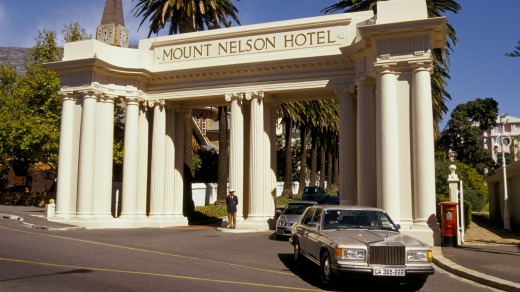
And mineral waters all round. For wonderful though it is, this meal is – in crude, tourist terms - a mere pitstop on an introductory, "Cape Town discovery trip", a loop that takes us from downtown to southern-most Cape Point and back again via the False Bay coastal road. It's great to be back.
The first time I visited Cape Town I stayed in an old prison, scampered up and down Table Mountain like a bouncy springbok, was chased by an irate ostrich, and managed to get hopelessly lost in the near-by Strandfontein Sewage Works while bird-watching. In short, I had a wonderful time.
Some 20 years on, I'm back, this time as a guest of Bill Peach Journeys, an Australian company that specialises in tailor-made tours for independent travellers. My tour has started in Johannesburg, continued by vintage train to Cape Town, and will eventually take me on to Botswana and Zambia.
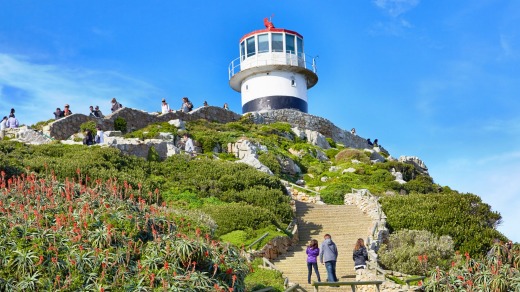
For my all-too-brief stay in South Africa's "Mother City" I am joined by expert guides Antoinette Du Preez and Jack Junker. Together they can explain anything, from the mating habits of local baboons to the recent, controversial decision to pull down a statue of British colonialist Cecil John Rhodes.
What better place to start than the five-star Mount Nelson Hotel, which, according to the city guide "snuggles coyly in the crook of Table Mountain". Opened in 1899, on the eve of the Anglo-Boer War, the hotel was designed to emulate the finest in London, then the capital of refined hostelry.
Known irreverently by locals as "The Nellie", the hotel has hosted guests such as Sir Arthur Conan Doyle, creator of Sherlock Holmes, British Prime Minister Winston Churchill, who nicknamed it "Pink Lady" for its peachy colour, and more recently Tiger Woods, Oprah Winfrey, the Dalai Lama and me.
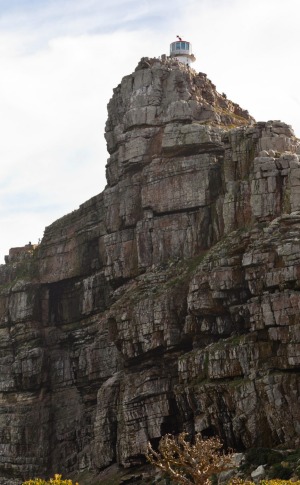
Opposite its imposing entrance, on the edge of extensive gardens which can be toured in the company of the head gardener, stands a statue of Indian leader Mahatma Gandhi, who worked in South Africa. Like me, he looks like he could do with a feed in the hotel's elegant, new dining area.
But that can wait. Soon, we're heading out of town: past the "gateway" to Robben Island, where national hero Nelson Mandela was imprisoned for 27 years; past a rugby museum dedicated to the exploits of the mercurial Springboks, and the Cape Town Stadium, which featured in the 2010 soccer World Cup.
Apart from the towering sheets of mountains and "funny" accents, the coast ride is reminiscent of parts of Sydney, of the Northern Beaches, or perhaps the Great Ocean Road. That is, it's dizzying, enticing, relaxing, laid-back and, throughout the Table Mountain National Park, terribly fire prone.
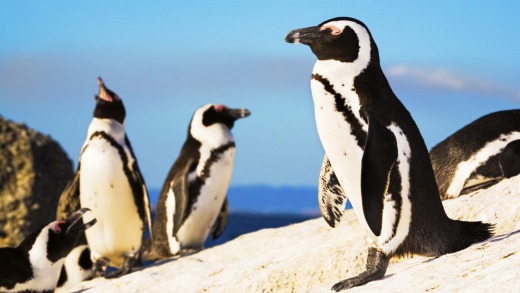
We pass bay after attractive bay - camps, famous for white-sand beaches, exorbitant real estate and wide choice of restaurants, Hout, with its picturesque harbour, Noordhoek, with its horse-riding trails and flourishing artists' community – before striking briefly inland towards Cape Point.
Almost everywhere, it seems, there are fishing boats collecting lobster, abalone and kelp; abandoned gun emplacements dating back to the 19th century; surfers, catching waves under the watchful eye of a shark-spotter sitting in a cliff-top kiosk; and reminders of the large number of wreckages. A reminder that this is one of the most treacherous stretches of water in the world.
By now, the views, the vegetation, and the wildlife have changed. We have arrived in the so-called "Fynbos Kingdom", a belt of land which has more endemic species of plants than anywhere else in the world. The Cape Peninsular alone has 2285 species, in an area a third the size of Greater London.
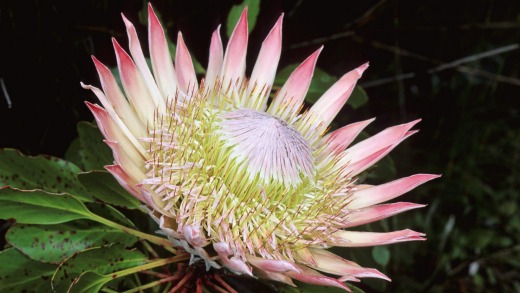
As we park, Jack runs through a few dos and don'ts. Look out for the harmless guinea fowl on the road. Don't stop to play with the local Chacma baboons. They can be aggressive. And, whatever you do, don't mess with the ostriches.
"You cannot outrun animals. They can move like a freight train," he says, as pressed for time, we take the Cape Point, or Flying Dutchman, funicular up through more, dense, fynbos, covered in blossom and birds, to the upper lighthouse. The views are to die for - literally in some unfortunate cases.
Given more time, perhaps we would have walked the 33 kilometres Cape of Good Hope Trail, a two-day trip including an overnight stay in one of three cottages at Rooikrans, the name of a tree originally exported to Cape Town from Australia.
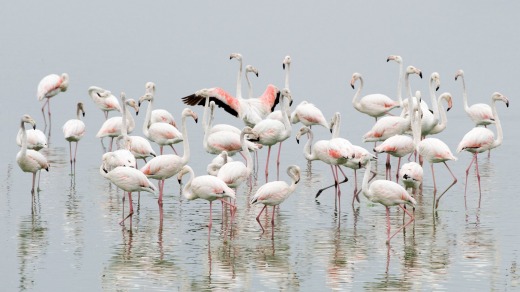
It is also possible to walk the 78 kilometres back to Table Mountain along the dramatic Hoerikwaggo Trail. All you need is a map, walking boots, a big rucksack and, oh yes, three or four days to spare. Perhaps another time. Perhaps followed by the famous 7½-kilometre Robben Island Freedom Swim.
Instead, we eschew the funicular and walk back to the car, go for a another bracing wander, and make a cheesy, thumbs-up photo stop at a wooden sign announcing this to be "the most south-western point of the African continent". Somehow, the qualification detracts from a genuinely dramatic place.
It is time to move on, northwards along the M4 on the eastern side of the cape, through a seascape dotted with evocative names. Trappies Cave, Venus Pool, Smitswinkel Bay, Parson's Nose, Rambly Bay. And just south of Simons Town, The Boulders, home of a famous colony of African penguins.
Any fears that we might not see the endangered bird are quickly allayed. Young and old, big or small, they seem to be everywhere: not just on the gently sloping beach, or among its rubbery bushes, but here and there scampering along the boardwalk, even waddling past the souvenir shops.
Over the long-term, breeding numbers have fallen, from 3900 birds in 2005 to 2100 in 2011 at Boulders Bay, the only place in the world where it is still possible to swim with such penguins. But locals are hopeful that the decline has been arrested.
Like ostriches, however, they should not be approached too closely. As one expert explains, the comical birds - once called Jackass penguins – are remarkably untroubled by people "But one should avoid harassing them by getting too close or chasing them. Beware! They have a vicious bite."
After a prolonged, pleasant bite to eat, at the Harbour House, we are on the move again, heading back towards the city, via one of Cape Town's greatest attractions, the truly divine Kirstenbosch botanical gardens.
Founded a century ago, to preserve and showcase South Africa's unique flora, on land once owned by today's unloved "white colonialist" Cecil John Rhodes, the gardens spectacularly straddle the eastern side of Table Mountain.
They may be enjoyed in so many ways: hiking, mountaineering, concert-going or, simplest and most rewarding, by strolling the sloping grounds, walking the tree canopy, taking a "sensations" stroll through aromatic flower-beds along a trailed designed originally for blind visitors.
There are dazzling displays of protea, the national flower, of pelargoniums, cycads and, a relatively recent attraction, the rare strelitzia reginae, or Yellow Bird of Paradise. It was recently renamed "Mandela's Gold", in memory of the much-loved, late leader who managed the nation's bloodless transition to majority rule.
Take in, too, the theme gardens, such as that devoted to wonderfully "useful plants" which can be used in the treatment of everything from headaches to HIV/AIDS secondary symptoms, from insect and snake bites to coughs, colds and flu, as well as "sexually related problems".
Specialist plants may also be useful in dyeing, erosion control, casting "charms", construction and crafts, and, more simply, providing cereals and vegetables.
However, they come with a warning: "Natural does not mean safe. Many of these plants, like 'normal' medicines, contain potentially dangerous or toxic chemicals, especially if incorrectly used or dosed. DON'T SELF-MEDICATE."
All too quickly, the light in the gardens dims, the air turns cold, as the sun disappears for another, action-packed day, behind ever-present Table Mountain, which must remain unscaled on this fleeting visit.
Sadly, it is time to move on. Of course, there's so much, much more to do in Cape Town, a vibrant city whose "modern" history dates back to the days of the Dutch East India Company, and which, as the recent removal of the Rhodes statue demonstrated, is still coming to terms with its past.
There are museums big and small. A Jewish Museum. A District Six Museum, which recalls the forced removal of 60,000 black residents from an area declared white in 1966. A museum dedicated to the first human heart transplant, performed by Christian Barnard at Groote Schuur Hospital.
There are free walks. Cheap, colourful eats and drinks at places such as Charley's Bakery, the Beerhouse, the Orphanage Cocktail Emporium and the Truth Coffee roastery. There's the open-air City Bowl Market, the Galileo Open Air Cinema and the Bo Kapp residents home cookery tours.
Further afield, there are vineyard tours by bike, or train; canal visits by stand-up paddle, and of course a guided tour to Robben Island. And, for hard-core twitchers, it's still possible to go birding on Strandfontein Sewage Works. Just don't get lost.
TRIP NOTES
MORE INFORMATION
billpeachjourneys.com.au
GETTING THERE
Qantas has direct flights from Sydney to Johannesburg. From there, South African Airways has connections to Cape Town.
STAYING THERE
The two-night Cape Town stay, at the Mount Nelson Hotel, is part of a collection of tours Bill Peach Journeys has created for independent travellers. The 12-day tour has daily departures through 2015-16, priced from $12,309 each, twin share. In 2016, there will also be a group departure of this tour. Quoted prices do not include airfares to and from Johannesburg.